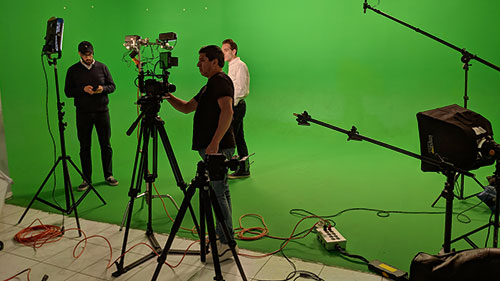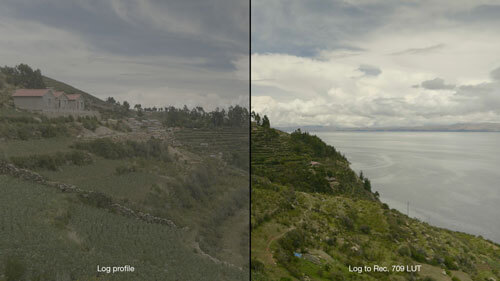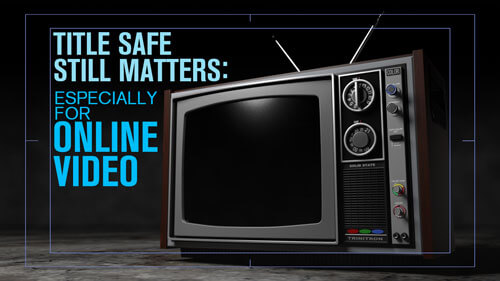
Tips for Directing Non Actors
Directing non actors can be a big part of video production. Many types of video require the use of real people – interviews, testimonials, local commercials, corporate videos, political campaign videos, etc.
If you’re working with non actors it is essential to know how to get a natural performance. We have all seen the terrible local car dealer commercials, and nobody wants to see more of that garbage.
Make Your Non Actors Comfortable
The most important thing is to make your non actors feel comfortable. People typically freeze up, and change their behavior once cameras come out. Some people get self conscious, some get silly. Pretty much everyone behaves in ways they normally wouldn’t.
Think about how stiff and unnatural some of your family gets at holiday photo time. Now imagine trying to have them deliver some lines in a compelling way.
Whether you’re filming a CEO reading from a script, or a group of students for B-roll, you need to put people at ease. Take a few minutes to chat with your non actors so your first interaction with them isn’t with your face stuck behind a camera. I find it can help to explain to them what you are doing while setting up for the shot, and just letting a conversation flow from there.
Everyone is different, so making each person comfortable will require different tactics.
Eliminate Any Unnecessary People
Having too many people around can be a distraction. You can waste time trying to move people out of a shot, or getting them to quiet down while recording audio.
In a worst case scenario you can wind up with a peanut gallery that can make your non actors feel uncomfortable or self conscious.
Years ago I was filming a successful business man reading a script from a teleprompter. Two of his children (both college age) were present while we were shooting. After each read-through his kids would chime in, giving notes. They were criticizing hand movements that were entirely out of the camera frame, and his delivery of lines that would be fixed in editing. Their commentary was completely irrelevant, counterproductive, and a waste of time. Once we got our non directors out of the room we got our non actor to relax again and were able to get through the script fairly quickly.
Clear the room of any unnecessary people ahead of time to save yourself the awkward situation of asking someone to leave after you have already started.
Have Only One or Two People at Most Directing Your Non Actors
Try to limit the number of people giving direction to your non actor. You want to make sure that they aren’t receiving contradictory feedback from several different sources. They also might feel uncomfortable having multiple people barking orders at them.
Some of your non actors will have other people with them that are supposed to be there – personal assistants, coworkers, marketing personnel, campaign managers, etc. Make sure that everyone is on the same page with how the final video should be, and that any notes they are giving are in alignment with those goals.
Plan to Edit
When working with non actors you should definitely plan to edit multiple takes together. Shoot multiple camera angles of them delivering their lines, or b-roll to cover the edits.
Explain the editing process to your non actor. Once they realize their words and actions don’t need to be perfect every time, it helps them loosen up.
Expecting to edit allows you to break the audio, or actions into smaller chunks. This way you can spend more time and coach people through any parts that are difficult for them.
If your talent is struggling with a certain section, see if you can move on to the next thing and circle back to it later. By that time your non actor should be a little more comfortable with being on camera, and you avoid the risk of them getting frustrated from constantly flubbing a line.
Shaping a Non Actor’s Performance
OK, I know what you’re thinking – All of the above is great for setting up the right environment, but what about actually giving direction to shape the performance?
Many of the things you would say to a trained actor won’t mean anything to non-actors. Directing non actors by saying things like “more stern and forceful” might get you the result you’re after, but more often will not.
You need to give them something they can identify with. If your non actor has children you might say “imagine you are telling your children to turn off the tv and do their homework for the third time.”
If you want them to deliver a softer performance you might have them imagine they are speaking to their grandmother, or speaking in a library… or speaking to their grandmother in a library.
The examples you give will vary in each circumstance, and for each person.
Action!
You can influence a performance by how you say “action.” This is the last direction that you give your actors before each take.
If you say something like “whenever you’re ready” or “let’s try one” it can have a more casual and low key feel. This can alleviate some of the perceived pressure to “perform.”
In contrast if you’re looking for something over the top, shouting “ACTION!” might get you a more energetic response… it also might make the person more nervous and have them freeze up. The way you say action is setting the tone for each take.



